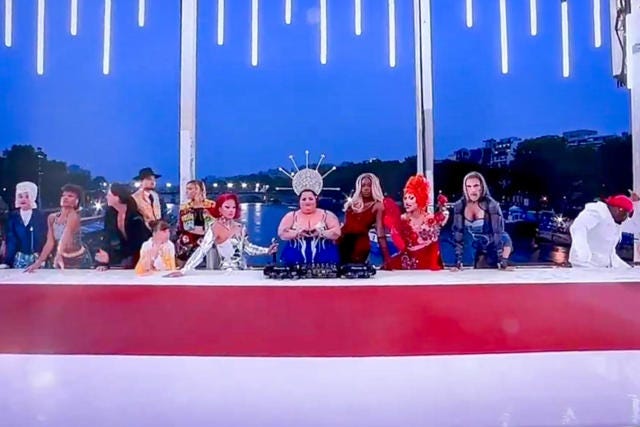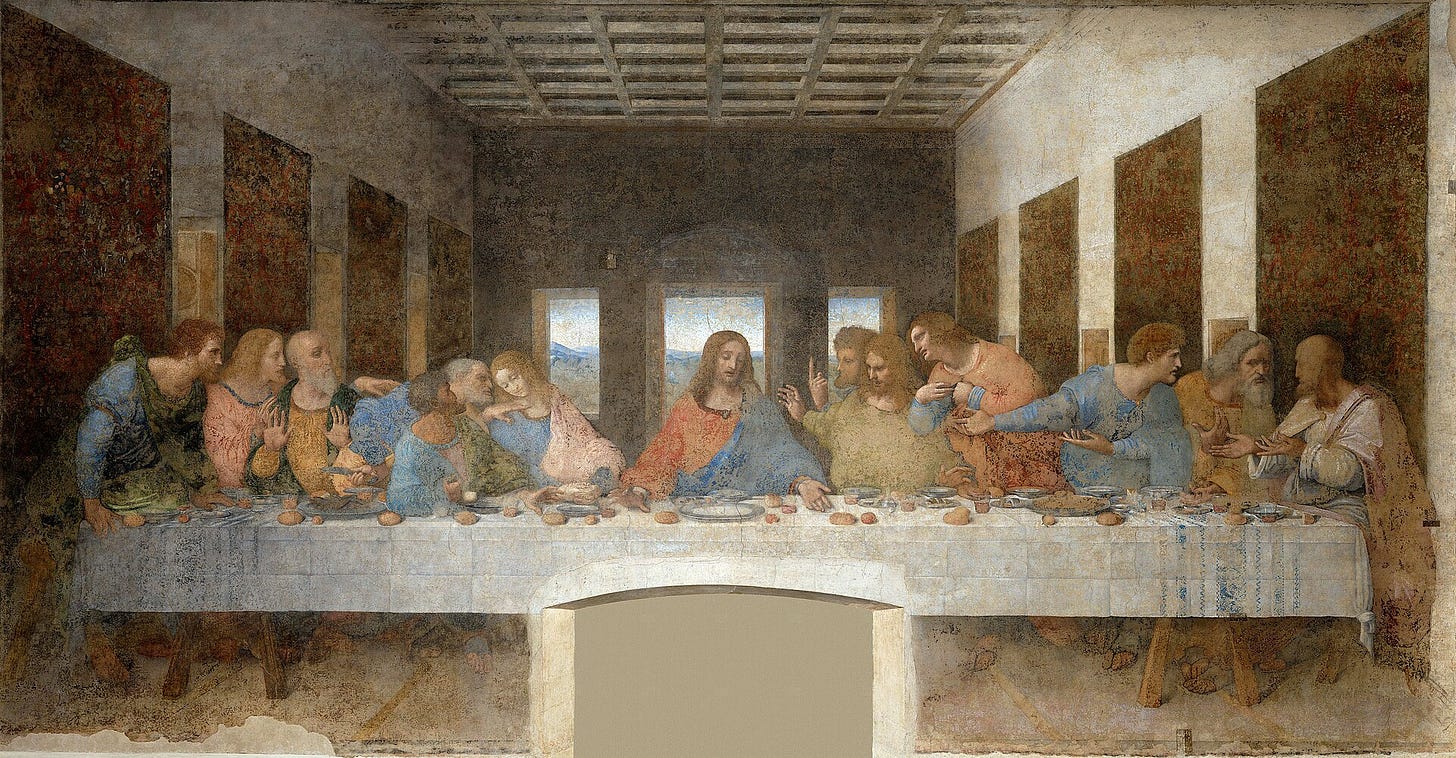This is a guest post from my wife, Allison Hardy. Allison has a Bachelor of Fine Art from West Virginia Wesleyan College and a Master of Fine Art from Towson University.
People are “outraged.” I'm using air quotes because I think most of it is performative, but still, some outrage about the depiction of The Last Supper during the Olympic opening ceremonies. Normally, I don't talk about current events or social issues. I use the online space to help women build, communicate, and thrive in their businesses. However, this time, I feel compelled to comment.
First, I have a terminal degree in painting. I hold a Master of Fine Arts and spent my entire graduate career studying Renaissance art. I love the Renaissance and enjoy discussing that period of art because I think it's phenomenal. Second, as a pastor's wife, I have spent countless hours talking about the intersection of United Methodism and culture. So here we are.
Let's dig in.
Let's look at Da Vinci's painting of the Last Supper. Da Vinci painted it from his context. He was a white man in Italy, so all the people in his painting look like white Italian men. Everything we create is influenced by who we are. I am a white, middle-class woman, so the way I perceive things is from that lens. Da Vinci's interpretation of the Last Supper comes from his perspective.
We must understand that Da Vinci’s painting is not a historical depiction of The Last Supper. Jesus probably was not white, and he and the disciples likely were not wearing beautifully colored robes. These people gave up everything to follow Jesus, including their material wealth, so they wouldn't have had extravagant clothing. The image we know as The Last Supper is not a historical representation.
Imagine if we could interpret things from different perspectives. Seeing The Last Supper reinterpreted in the way it was last night is someone's interpretation, likely making a social statement, and that is okay. It's their interpretation. By getting so worked up about this version, we miss the opportunity to learn about people who are different from us.
What if we embraced the idea that there are people different from us in the world, and we could learn from them? Understanding their perspective would help us approach unexpected situations with curiosity and a desire to learn instead of outright rejection.
And before you get upset or outright reject a piece of art, check with the artist to see what they have to say. The Washington Post reported that the performance in question was a choreographed interpretation of a depicted Dionysian feast.
“The idea was to do a big pagan party linked to the gods of Olympus,” Opening Ceremonies choreographer Thomas Jolly told the Paris-based BFM network on Sunday, according to France 24. “You’ll never find in my work any desire to mock or denigrate anyone.”
But organizers reportedly acknowledged Sunday that Jolly “took inspiration from Leonardo da Vinci’s famous painting to create the setting.”
“[Jolly] is not the first artist to make a reference to what is a world-famous work of art,” Paris 2024 said in a statement to The Wrap. “From Andy Warhol to ‘The Simpsons,’ many have done it before him.”
At the end of the day, this “outrage” might have been more outrage for the sake of being outraged than it was about the content of the art on display in Paris.
As a pastor's wife, I feel compelled to say this: the Kingdom of God isn't only available to white men. The Kingdom of God is available to everyone. That is God's grace. The whole point of Christianity is that the Kingdom of God is made up of all people, whether you like it or not.
So, the next time you see a piece of art or a performance, instead of beginning with outrage, take a moment to breathe and allow the Holy Spirit to open your eyes and heart to better see and understand what the artist is trying to say.









I agree! The historical Jesus would definitely have invited all of these people to sit at his table if they were alive back then and the Resurrected Christ invites them today.
🔥🔥🔥